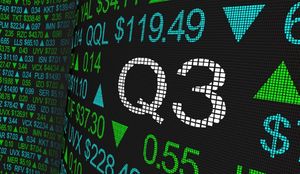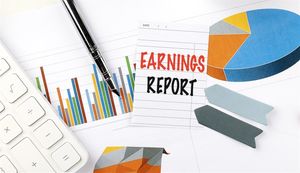
How ecological overspending exposes hidden risks — and creates new opportunities — for portfolio construction
This story first appeared on the Substack blog SRI-ously Speaking
July 24, 2025: Remember this date. Because next year will be measuring against it as 2025’s official “Earth Overshoot Day.” For those unfamiliar with the term, as of this date, on a global scale, we’ve used more ecological resources than the Earth is capable of generating in a year.
If you want to think about it from a business angle, think about it this way: for the rest of this year, we are depleting natural capital rather than living off its interest.
Why is this a big deal? Aside from the obvious (it’s never a good idea to consistently live off the “principle”), Overshoot Day has occurred almost a whole week earlier than last year (August 1, 2024). In 2000, it fell on September 17, and before the 1970s, Earth Overshoot Day wasn’t even necessary to measure: it wasn’t happening.
Let me take a minute to set the stage for what is happening across the globe and here in the United States with some rather shocking data …
Running on empty
According to a whole host of data from the Global Footprint Network, we are are in a bit of a pickle. Far too many developed nations (i.e. the richest nations) are experiencing what is known as an ecological deficit. This occurs when the Ecological Footprint of a population exceeds the biocapacity of the area available to that population.
The Ecological Footprint is a metric of human demand on ecosystems. An ecological reserve (rather than a surplus) is the opposite of this: it exists when the biocapacity of a region exceeds its population’s Ecological Footprint.
Ultimately, the average Ecological Footprint of a human on Earth as of 2025 is about 2.6 hectares — for forest products, crops, fishing, grazing, etc.

As of 2025, humanity uses 21.7 billion global hectares of nature’s resources — nearly 1.8 times the planet’s 12.2 billion hectares of available biocapacity. This level of consumption, often described as using “1.8 Earths,” far exceeds sustainable limits. To preserve biodiversity and a stable climate, ecologists recommend using no more than half of Earth’s biocapacity, over three times less than current demand. Source: Foster + Partners
Now, looking to individual nations, we get another interesting picture. Shades of red on this global map indicate biocapacity debtors — the darker the red, the greater their carbon footprint is than their biocapacity. Shades of green indicate biodiversity creditors — the darker the green, the more their biocapacity is greater than their carbon footprint.

Source: Footprint Network Data
It is worth noting here that most oil exporters, the nations with the densest populations, and the most developed nations tend to be biocapacity debtors. Versus nations with sizable forests (i.e. carbon offsets) are creditors.
Now, if this sounds a bit too jargon-heavy, you can think about it like this: if a country were to tap into the “principle” of its natural capital rather than living of its “interest.” Exactly how much “principle” are we talking about when we are talking about the demand on nature?
The Earth Overshoot Day only tells the date the whole world overshoots its capacity. When it comes to individual country consumption, the problem looks WAY worse (because it is).
In this infographic, we can see how many of each country is needed to meet is own residents’ demands on nature each year. Japan would need 6.6x it’s own nation to meet the natural demands of its 124 million people, China would need 4.7x it’s own nation to meet the natural demands of its 1.41 billion people, and 2 Americas would be needed to meet the demands that all its 340 million people put on nature.
When all averaged out, humans use 1.75x more resources than the Earth currently has to give. And this is not sustainable no matter how you slice it.

Now, does this chart mean that Japan, China, Italy, etc. are greater resource hogs that the USA. Good gosh, no. The USA actually hit its own Overshoot Day back on March 13, 2025 — beating out only 7 other countries. Japan hit theirs on May 8th, China on May 23rd, and Italy on May 6th. See the infographic below for all of the individual country Overshoot Days in 2025:

The Land of the Free
So why include that infographic at all? The point is that nations like Japan, China, Italy, etc. are limited in their domestic natural resources to begin with, so it would make sense that with a large population and limited natural resources, it would stretch the capacity of what they currently have to offer their citizens.
Thus they import a fair amount of natural resources to make up the difference. The USA on the other hand, has plenty of natural resources, yet its citizens still consume twice as much as the country has available to it on an annual basis.
According to data from Earth Overshoot Day, Americans burn through resources at a much higher rate than most countries. In fact, if all citizens on the planet lived the same way the average American lives — driving large personal vehicles, forgoing public transportation when available, constantly being in air-conditioned buildings and homes, buying into fast fashion, replacing electronics every year, ordering literally everything from Amazon, eating primarily processed foods, etc. — we would need the resources of 5 Earths to sustain a population of 8.062 billion Americans.
This chart depicts how many Earths would be necessary if everyone on Earth consumed resources the way that the population of the respective nation of the left consumes resources:

Of course, this picture makes a bit more sense if you think about it: the developed world generally lives and consumes frivolously at the expense of underdeveloped nations.
However, an interesting case here is to look at India — in a country of over a billion people if everyone consumed the way the Indian population does only 0.7 Earths would be needed, but China (with a similar-sized population) would require 2.5 Earths. Indians have found a way to live with less and not take up much space in the process — a product of their environment.
In a way, it teaches us that it is possible to live with less, and we don’t need to take up much space.
The average living space per person in the United States is 2,200 square feet. In China, it’s 449 square feet. In India, it’s 117 square feet in urban areas and 103 in rural areas. (I don’t know if my childhood bedroom was less than 103 square feet!).
Advisors and Earth Overshoot Day
When it comes to anything related to sustainable investing, I never encourage hyperbole, especially when it comes to financial advising. Even though this is one of those instances where hyperbole is merited, one should still exercise caution.
We can view Earth Overshoot Day as a powerful concept that financial advisors — especially those already integrating sustainability into their practice — can use to drive and retain new clients.
Here are five reasons why Overshoot Day matters for financial advisors:
1. It’s a clear signal of environmental risk
If the check-engine light of my car comes on during a long road trip, you bet I’ll be stopping at the next service station to make sure the vehicle will make it home. Think of Earth Overshoot Day as a planetary check-engine light that’s been illuminated on the dashboard. Except this light has been on for years, and we’ve reached a point where we can no longer ignore it.
It’s a warning that illustrates the ecological overspending that underlies systemic environmental risks such as deforestation, biodiversity loss, water scarcity, and climate change. All of these things can (among other business concerns):
- Disrupt global supply chains
- Impact the long-term viability of companies and sectors
- Create stranded assets in carbon-intensive industries
Advisors should understand and recognize these as material risks to individual client portfolios, not just broad environmental concerns.
2. It reinforces the case for sustainable investing
Earth Overshoot Day strengthens the rationale for aligning investments with planetary boundaries. Tempting as it is to think that the Earth has an endless supply of resources, this just isn’t true.
Here is where financial advisors can:
- Use the concept of planetary boundaries to help explain why ESG integration, sustainability-themed funds, or impact investments are not just value-driven, but risk-aware.
- Frame sustainable investing as a way to support economic activity that stays within Earth’s regenerative limits.
3. It’s a client conversation starter
Advisors can take this opportunity to use the charts and infographics above as memorable and visual talking points in client meetings that they definitely won’t forget anytime soon. Some of the best advisors I know are excellent storytellers, and if you don’t think that you are (yet), these visuals along with some of the questions below, can be a great starting point:
- “Did you know we’ve already used up our annual ecological budget by August?”
- “Are you aware that your investments can play a role in broader societal impact?”
- “How much do you think capital markets play in the resiliency of societies from natural disasters?”
It opens the door to conversations about values, climate risk, and the role of capital in building a resilient future.
4. It highlights opportunities in the green economy
Overshooting the planet’s capacity suggests that solutions (i.e. adaptation efforts) are in demand. Whether or not your client “believes” in climate change, there is no viable business argument to be made in investing in a perpetual problem, regardless of the nature of the problem.
Renewable energy, circular economy models, sustainable agriculture, green buildings, and resource-efficient technologies are all aligned with “moving the date.”
Financial advisors can position these efforts as growth opportunities in client portfolios.
5. It encourages holistic wealth planning
Advisors can use this time as a reminder that wealth isn’t just financial—it’s also environmental and social. As such, advisors can:
- Help clients consider the legacy of their investments—are they compounding wealth in a way that contributes to or detracts from future generations’ well-being?
- Tie investment strategy to stewardship values and intergenerational equity. If they are leaving sizable assets to Millennials, Gen Z, or Gen Alpha investors, think of how they will think of this type of investing. They are sure to thank you!
Bonus tip: Tie in the personal
Advisors can also invite their clients to explore their own ecological footprint and how their consumption, travel, diet and investment habits intersect. Tools like www.footprintcalculator.org can personalize the conversation. This is one more way to add unique value to your services.
Thanks for reading “SRI-ously Speaking” with Jenny Coombs! Subscribe for free to receive new posts and support my work.
More SRI-ously Speaking: Why green burials belong in your financial planning conversation





